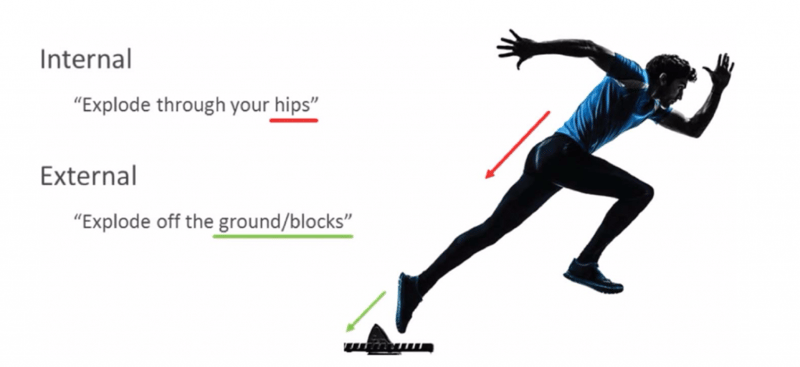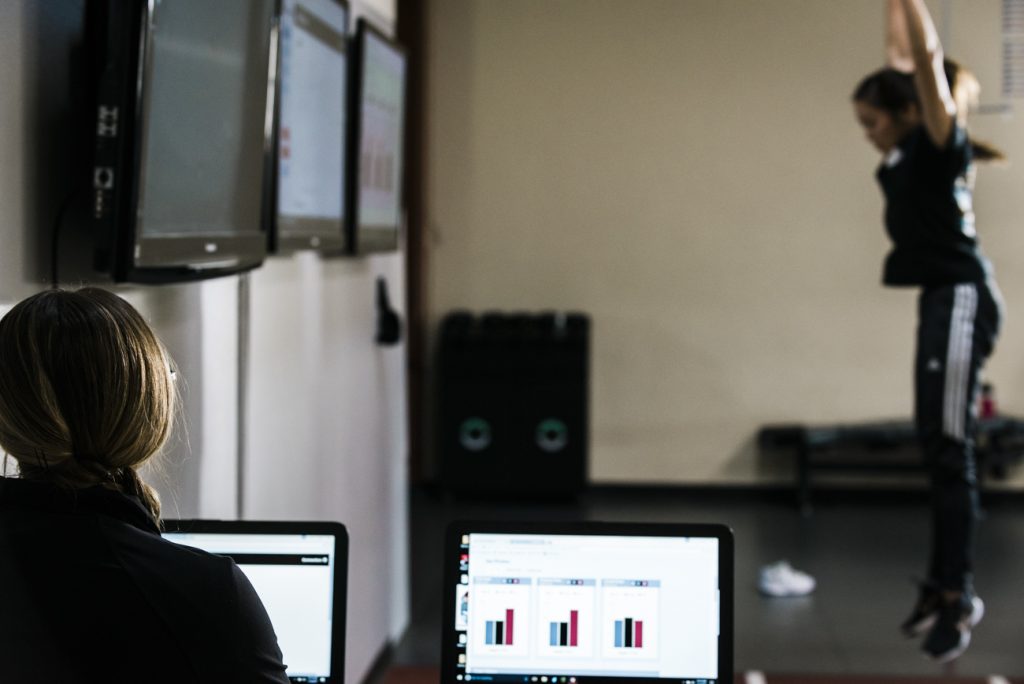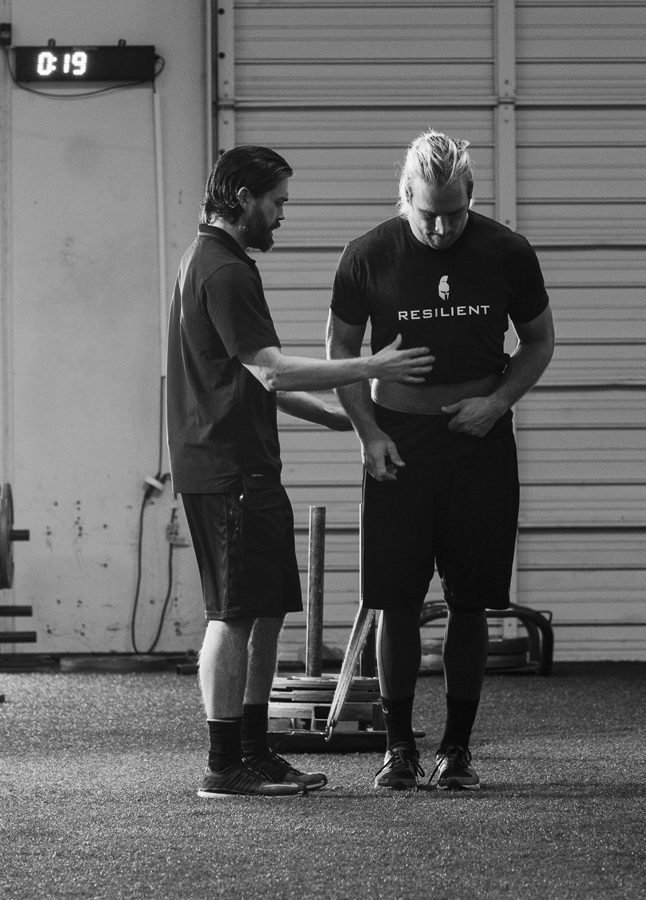
Image from Benz, Adam, et al. “Coaching Instructions and Cues for Enhancing Sprint Performance.” Strength & Conditioning Journal 38.1 (2016): 1-11.
A few years ago, I was working with a football athlete in the collegiate setting trying to teach him how to perform a clean properly. Because this athlete was a transfer student, he hadn’t gone through the teaching progression I normally use when teaching the Olympic lifts. I was trying to use every cue I could think of to (1) get this athlete to get full triple extension and (2) get the bar quickly to a proper front rack position.
Halfway through one of his sets one of his teammates stopped him and gave him some tips. The next rep was perfect. Perfect. Here I am as a trained strength and conditioning coach with years of experience performing and teaching the Olympic lifts, and one of my athletes with no formal coaching education was able to get him to do something I couldn’t. I was shocked. I had to ask, “What did he say to get you to do that?”
There has been a plethora of recent research discussing what cues work best when coaching athletes. Knowing when and why to use these coaching cues is often considered part of the art of coaching. However, diving deeper into the science behind this art should help us to be able to make better decisions on what cues to use, when to use them, and with what population.
As a strength and conditioning coach or sports medicine practitioner, reading research should be part of your routine. While we do not deny there is definitely an art to coaching, we cannot allow ourselves to simply hide behind this idea and use it to justify what we do as more and more scientific information becomes available. Just as we pride ourselves in following and applying the most up to date scientific research in regards to physiology, the same tactics must be used in the fields of motor learning and psychology to better understand the athlete holistically. Most of the recent research on attentional focus has been looking at two main types of cues, internal and external.
Internal Cues are coaching cues that direct an athlete’s focus internally on their body movements or the movement process. For example, “squeeze your glute” or “fully extend your hips.”
External Cues are coaching cues that direct an athlete’s focus externally on the environment or movement outcome. For example, “push the ground away” or “explode off the ground.” (1)
The current research regarding attentional focus and internal vs external cues often refers to what is called the constrained-action hypothesis. The constrained-action hypothesis suggests “when performers utilize an internal focus of attention (focus on their movements) they may actually constrain or interfere with automatic control processes that would normally regulate the movement, whereas an external focus of attention (focus on the movement effect) allows the motor system to more naturally self-organize.”(2)
Perhaps because of these and related findings there has been a push for coaches to include more external cueing when working with their athletes. Multiple studies have found using external cues to result in greater performance than internal cues or control groups in a variety of different tasks: swimming, jumping, sprinting, and throwing just to name a few. Some of the research has shown external cues to have a greater effect on novice or amateur athletes than on their elite counterparts. (3) Perhaps even more interesting is looking at some of the studies that have measured both quantitative measures of performance as well as kinetic or more qualitative measures of movement.

For example, a study in 2016 found athletes coached with an external focus were able to broad jump further than those with an internal focus, however there was no difference in peak force. (4) Another recent study found their control group to perform best in a 10m sprint when compared to both an internal and an external group. However, quite surprisingly, the internal and external groups actually had higher peak vertical forces than the control group with no significant differences in other measured force variables such as average horizontal force. (5)
Overwhelmingly the research points to using external cueing to improve performance. However, as coaches and practitioners, often times the goal or intent of much of our training is more movement process based than performance outcome based. For example, two different athletes can jump the same height (performance) using very different neuromuscular solutions and movement patterns (process), for us, as measured by using the Sparta Scan. Because of this, one athlete may be at greater risk of injury. Some related research suggests that a fatigued athlete can continue to have the same level of output or performance, but go about achieving that performance in a different way. (6)
The constrained-action hypothesis refers to the common “paralysis by analysis” phenomenon by focusing on using external cues as to not interfere with an athlete’s natural movement solutions. However, as we have seen, athletes are master compensators. If your intent is to change HOW an athlete moves, internal cues may be a crucial piece to the puzzle.
Coaching requires great communication between coach and athlete. Active teaching and learning must be taking place in order for lessons to stick. If you are actively coaching an athlete, before you move on you MUST see some sort of response or reaction to these cues. If your athlete doesn’t respond, you aren’t coaching, you are merely talking.
“You’re either coaching it, or allowing it to happen.”

Often times athletes don’t understand the cues we use. By asking questions and actively engaging them in the process you are able to learn how they are interpreting your cues, if at all. We have discussed previously some of the benefits of getting your athletes involved in the process. Giving them ownership can not only improve buy in and compliance, but in this case, can help them continue to make progress and improve on movement skills you are teaching.
Whenever that “light bulb” moment occurs and an athlete does exactly what you are intending, this is a cause for celebration! Immediately after this occurs, discuss with your athlete to find out what specific cue it was or thought they had that got them to make the correct adjustment. By turning this into an event, the athlete will remember what specifically they are working on and what specifically they need to think about the next time they do this movement.
From there, you as a coach are able to learn not only what specific cue worked in that instance with that athlete, but what types of cues that athlete may respond to best in the future. The next time this athlete performs this movement, by asking them what they are working on and what they need to think about they will tell you specifically what cues or types of cues they respond best to.
Benz, Adam, et al. “Coaching Instructions and Cues for Enhancing Sprint Performance.” Strength & Conditioning Journal 38.1 (2016): 1-11.
Wulf, Gabriele, Nancy McNevin, and Charles H. Shea. “The automaticity of complex motor skill learning as a function of attentional focus.” The Quarterly Journal of Experimental Psychology: Section A 54.4 (2001): 1143-1154.
N.C. Winkelman et al. “Experience level influences the effect of attentional focus on sprint performance” Human Movement Science 52 (2017) 84–95
Ducharme, Scott W., et al. “Standing long jump performance with an external focus of attention is improved as a result of a more effective projection angle.” The Journal of Strength & Conditioning Research 30.1 (2016): 276-281.
Bezodis, Neil E., Jamie S. North, and Jane L. Razavet. “Alterations to the orientation of the ground reaction force vector affect sprint acceleration performance in team sports athletes.” Journal of Sports Sciences (2016): 1-8.
Gathercole, Rob, et al. “Alternative countermovement-jump analysis to quantify acute neuromuscular fatigue.” International journal of sports physiology and performance 10.1 (2015): 84-92.